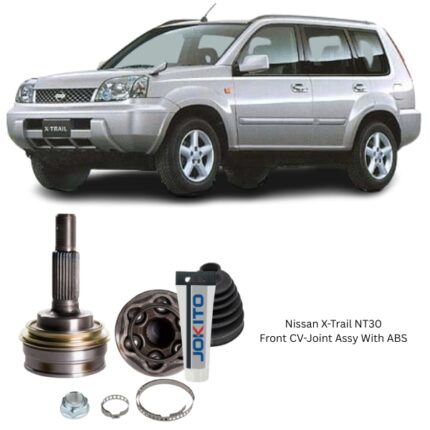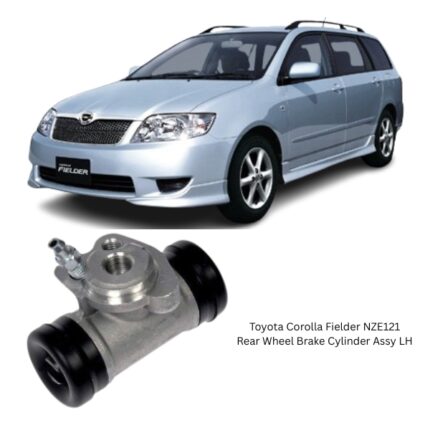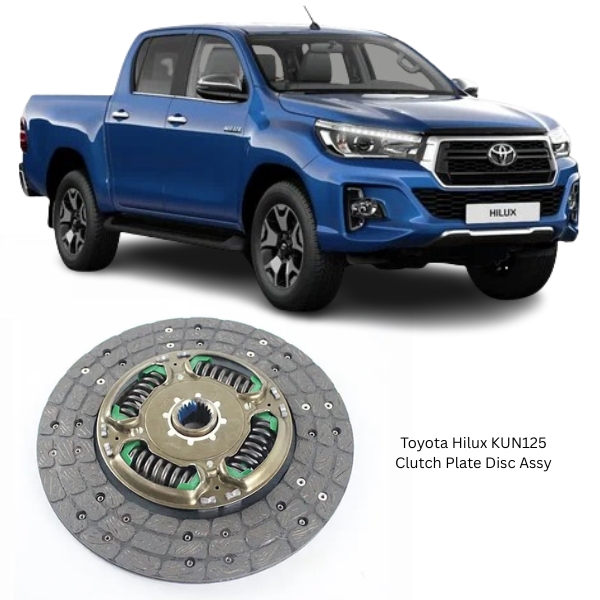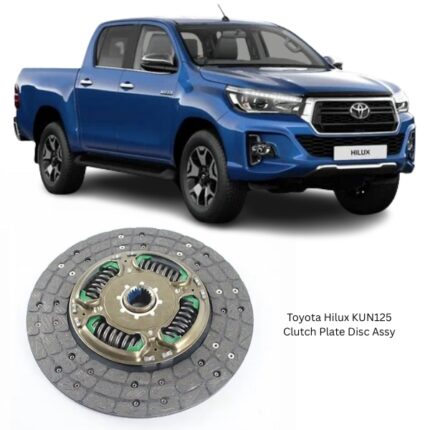Get Toyota Hilux KUN125 With 1GD/2GD-FTV Engines Clutch Plate Disc Assy 31250-0K280 in Kenya
The Clutch Plate Disc Assembly is a fundamental component of the manual transmission system, acting as the vital link between the engine and the transmission. It plays a critical role in the operation of a vehicle by enabling smooth engagement and disengagement of power flow from the engine to the wheels. Designed with precision, this assembly ensures optimal torque transmission, driving comfort, and long-term durability under varying load and speed conditions.
Whether you’re replacing a worn-out clutch in a daily driver, commercial vehicle, or performance car, a quality Clutch Plate Disc Assembly guarantees responsive driving dynamics, smooth gear transitions, and extended component life.
What Is a Clutch Plate Disc Assembly?
The Clutch Plate Disc Assembly (commonly referred to as the clutch disc) is the friction component sandwiched between the flywheel and the pressure plate. When the clutch pedal is engaged, the pressure plate releases its clamping force, allowing the clutch disc to spin freely and disconnect power from the engine to the transmission. When the clutch pedal is released, the pressure plate clamps the disc tightly against the flywheel, transferring rotational force and allowing the car to move.
The clutch disc is lined with friction material on both sides and includes a splined hub in the center that connects to the transmission input shaft. Some clutch discs also feature dampening springs or torsional springs to absorb shocks and reduce drivetrain vibrations.
Core Components of the Clutch Disc Assembly
-
Friction Linings
High-performance, heat-resistant materials bonded on both sides of the disc to engage with the flywheel and pressure plate. -
Clutch Hub
A metal hub at the disc’s center, splined to match the transmission input shaft for precise torque delivery. -
Torsional Dampers
Spiral or coil springs integrated into the disc to reduce shock loads and vibration during engagement. -
Cushion Segments
Small layers between the friction surfaces and disc core to provide progressive engagement and enhance drivability. -
Rivets and Retainers
Heavy-duty fasteners used to hold the components together and ensure disc integrity under pressure.
Function and Operation
The clutch plate assembly works in tandem with the flywheel and pressure plate to manage the connection between the engine and the transmission. Here’s how it works:
-
Pedal Depressed: The pressure plate moves away, disengaging the clutch disc from the flywheel—this interrupts power transfer, allowing gear changes.
-
Pedal Released: The pressure plate clamps the clutch disc against the flywheel, transmitting engine torque through the transmission to the wheels.
This friction-based engagement system must operate efficiently, even under high load, high RPM, and varying driving styles.
Where It’s Located
The clutch disc is located:
-
Between the flywheel and the pressure plate
-
Inside the clutch housing (bell housing)
-
Mounted on the splined shaft of the transmission input shaft
Its positioning is critical for alignment, balance, and overall transmission performance.
Material Construction
Quality clutch discs are built to withstand:
-
High frictional forces
-
Extreme temperatures
-
Rotational stress
Typical material features include:
-
Ceramic, Kevlar, or Organic friction linings: Engineered for high heat resistance and consistent grip.
-
Heat-treated steel cores: Provide rigidity and structural strength.
-
Anti-distortion backing plates: Prevent warping under high RPM.
-
Copper or brass woven reinforcements: Found in performance discs for superior heat dissipation.
These materials are selected based on the vehicle’s usage—daily driving, towing, off-road, or racing.
Key Benefits of a High-Quality Clutch Plate Disc Assembly
-
✅ Smooth Power Delivery
Maintains seamless torque transfer without judder or vibration. -
✅ Extended Service Life
Durable friction linings and spring dampers reduce wear and tear. -
✅ Improved Driving Comfort
Torsion springs cushion engagement for better control, especially in stop-and-go traffic. -
✅ Performance Under Load
Handles aggressive driving, towing, or off-road challenges without slipping. -
✅ Cost-Effective Repairs
Replacing the disc alone (in clutch service kits) is more economical than full transmission replacements.
Common Symptoms of a Worn or Faulty Clutch Disc
Knowing when to replace your clutch disc is essential for avoiding drivability issues or transmission damage. Look for:
-
Slipping clutch: Engine revs increase, but vehicle speed doesn’t—common in worn friction linings.
-
Hard or jerky engagement: Caused by warped discs or broken dampers.
-
Unusual noises: Squealing or grinding sounds when shifting gears or engaging clutch.
-
Clutch pedal vibration: Caused by uneven wear or damaged torsional springs.
-
Burning smell: Sign of overheated or slipping clutch.
Timely replacement helps maintain vehicle performance and protects more expensive components like the flywheel or pressure plate.
Installation Notes
Clutch disc replacement is a moderately labor-intensive job best performed by experienced mechanics. Key installation steps include:
-
Remove transmission to access clutch components.
-
Inspect and resurface flywheel (or replace if needed).
-
Install new clutch disc, aligning it with a pilot tool.
-
Reinstall pressure plate, torquing bolts in a crisscross pattern.
-
Check clutch release bearing, slave cylinder, and pilot bearing.
-
Reassemble transmission and test drive for smooth engagement.
Note: It’s always advisable to replace the clutch disc as part of a complete clutch kit that includes the pressure plate, release bearing, and sometimes the flywheel.
Maintenance Tips
-
Avoid riding the clutch (resting your foot on the pedal).
-
Don’t hold the vehicle on an incline using the clutch—use the brake.
-
For performance or heavy-duty use, consider upgraded friction materials like ceramic or Kevlar.
-
Always replace damaged or leaking slave/master cylinders to ensure consistent clutch operation.
Follow us on Facebook for more parts.





Reviews
Clear filtersThere are no reviews yet.